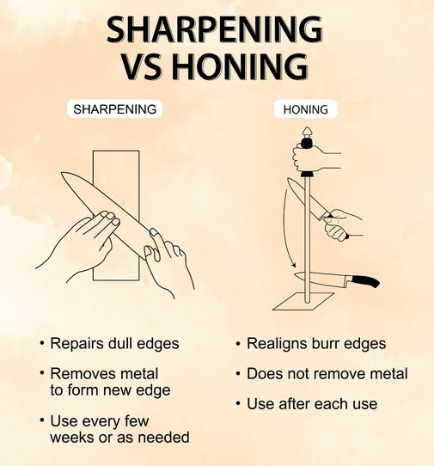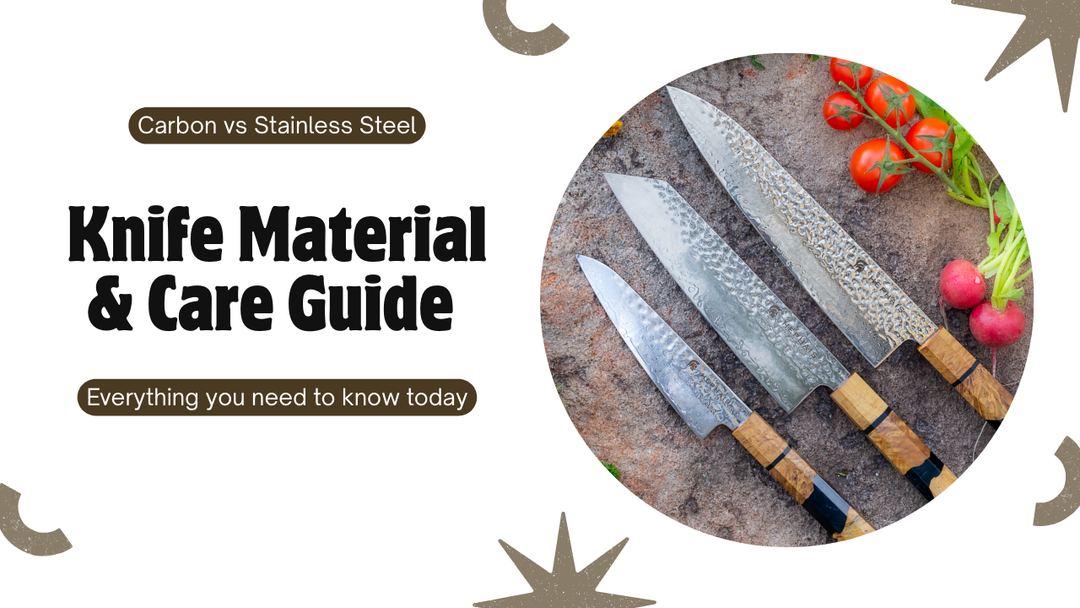Stop Over-Sharpening! Why Every Chef Should Use a Honing Steel
Sharpening your knife too often might be doing more harm than good.
In our latest video — Stop Over-Sharpening! Use a Honing Steel Instead (Pt.1) — we explain a crucial concept every chef and home cook should understand: honing is not sharpening.
At Hephais, we craft professional-grade knives designed to hold their edge longer — but even the best knives need proper maintenance. This article breaks down the science behind honing vs. sharpening and how using a honing steel correctly can dramatically extend your knife’s lifespan.
Honing vs. Sharpening: What’s the Difference?
A honing steel realigns the edge of your knife; it doesn’t remove metal.
When you use your knife, microscopic bends form along the blade. These bends make it feel dull even though the edge is still there. By gliding the knife along a honing rod at the correct angle (typically 15°–20° for most Hephais knives), you restore that fine edge alignment.
Sharpening, on the other hand, removes material from the blade to recreate a new edge. Done too often, this process wears down the knife unnecessarily, shortening its life and changing its geometry.
Think of honing as daily maintenance — and sharpening as occasional repair.

Why Over-Sharpening Is a Problem
Over-sharpening can cause:
-
Uneven bevel angles that affect cutting precision.
-
Excessive thinning near the edge, making the blade fragile.
-
Loss of the knife’s original profile and balance.
If you find yourself reaching for the whetstone every week, it’s time to re-evaluate your knife care routine. For most chefs and home cooks, regular honing after every few uses keeps your knife razor-sharp between full sharpening sessions.
How to Use a Honing Steel Correctly
-
Hold the honing steel vertically with the tip resting on a stable surface.
-
Place the knife at a consistent angle (15°–20°).
-
Glide the blade from heel to tip with gentle pressure.
-
Repeat 3–5 times per side — no speed, no force, just precision.
In our YouTube tutorial, we demonstrate this process step-by-step so you can see how the edge straightens without removing steel.
Recommended Tools for Proper Maintenance
For best results, pair your Hephais knife with:
-
A ceramic or stainless honing rod for daily alignment.
-
A whetstone (grit #1000–#5000) for occasional sharpening.
-
A non-slip surface to ensure stability during maintenance.
Every Hephais knife — whether it’s the Aurora Damascus Kiritsuke or the Perseus Chef Knife — is engineered to perform under professional conditions. With proper honing, you’ll keep that factory-level sharpness far longer than most mass-produced blades.
Final Thoughts
Mastering knife maintenance separates professionals from amateurs. Honing correctly saves time, preserves your investment, and keeps every cut smooth and effortless.
📺 Watch the full video:
📬 Subscribe to our YouTube channel for part two — where we dive into sharpening angles, grit selection, and pro-level maintenance tips.






